Exhibition dates: 14th May – 11th October, 2021
Curators: Brian Clark, Susan Kravitz, and Parker Sargent for the Cherry Grove Archives Collection and coordinated at New-York Historical by Rebecca Klassen, associate curator of material culture
Weekend Guest at Hot House
1958
Cherry Grove Archives Collection, Gift of Harold Seeley
During the 1950s, Cherry Grove provided gay individuals a much-needed escape from the homophobia and the legal and social persecution that many experienced in the era of McCarthyism following World War II. Homosexuals faced physical assault, verbal attacks, family rejection, loss of employment, imprisonment, and even involuntary psychiatric hospitalisation. In the Grove, they could openly socialise and experience a joyful and rare freedom of sexual expression.
I seem to be on a roll at the moment with a series of exhibitions that this archive loves to highlight: human beings who picture, capture, depict, image, or photograph the subversive, marginalised, disenfranchised, hidden ‘Other’ in society – as an act of resistance against living lives of conformity, against the prejudices of patriarchy and religion, and against the oppression of bigotry and discrimination.
This exhibition is no exception.
In the 1950s, in an era of “passing” – where queer people had to pass themselves off as something else, something they were not, in order to keep a job or secure a roof over their heads – it is refreshing to see these candid, vernacular, performative photographs of, admittedly, privileged white gays playing, camping it up and having fun with their liberation and identity construction. Having fun in their lives.
Acknowledgement must be made that this party life on Fire Island in the 1950s was only for the white, middle-upper classes. Black, Hispanic, Latino and poor white gay trash need not apply. But that does not mean that these photographs are any less valuable in documenting queer resistance to the status quo.
Dr Marcus Bunyan
Many thankx to New-York Historical Society for allowing me to publish the photographs in the posting. Please click on the photographs for a larger version of the image.
Curator Confidential: Safe/Haven: Gay Life in 1950s Cherry Grove
During weekends and summers in the pre-Stonewall era, gay men and women, including many New Yorkers, traveled to the secluded beach town of Cherry Grove on Fire Island where they found opportunities for sexual exploration and self-expression – behaviour that was both stigmatised and criminalised in the straight world. Together with creative figures like Truman Capote, W.H. Auden, Carson McCullers, and Patricia Highsmith, these visitors to the Grove took pleasure in the costumed parties, theatrical events, and liberated atmosphere that this gay sanctuary provided.
On view outdoors in New-York Historical’s rear courtyard, this exhibition explores the gay and lesbian community that flourished during the 1950s in Cherry Grove through some 70 enlarged photographs and additional ephemera from the unique holdings of the Cherry Grove Archives Collection.
Curated by Brian Clark, Susan Kravitz, and Parker Sargent for the Cherry Grove Archives Collection and coordinated at New-York Historical by Rebecca Klassen, associate curator of material culture.
One Hundred Club Party
1949
Cherry Grove Archives Collection, Gift of Harold Seeley
During the 1950s, campy costume parties were held every summer weekend. Attendees, straight and gay, showed off flamboyant outfits that would have otherwise been considered a violation of New York laws prohibiting risqué attire and cross-dressing.
Outside of Bea Greer’s Home, Bea’s Brunch
1951
Cherry Grove Archives Collection, Gift of Harold Seeley
Cocktails, sunbathing, sex, and parties were the norm during summer weekends. Gay men and women found opportunities to socialise out in the open, whether on the beach or on the decks of Grove houses.
Parasol Party
1951
Cherry Grove Archives Collection, Gift of Harold Seeley
Under the guise of dressing up, many men and women were able to play with gender norms at these fabulous cocktail parties, thereby challenging society’s expectations of “proper” behaviour.
Patricia Fitzgerald and Kay Guinness, Cherry Grove Beach
September 1952
Cherry Grove Archives Collection, Gift of Gay Nathan and Julie Paradise
Kay Guinness (right) was an iconic Cherry Grove figure. Independently wealthy and closeted, she had affairs with women while also being married three different times to men. She flew small airplanes, had her own motorboat, and loved to be part of fashionable society. In the 1950s, Guinness was arrested in Cherry Grove for nude sunbathing on the beach. Her cottage was named No Man’s Land.
The New-York Historical Society presents Safe/Haven: Gay Life in 1950s Cherry Grove, an intimate look at one of the first gay beach towns in the United States, on view in New-York Historical’s rear courtyard May 14 – October 11, 2021. The outdoor exhibition explores mid-20th-century gay life in Fire Island’s remote hamlet of Cherry Grove, located on the barrier island south of Long Island, through some 70 enlarged photographs and additional ephemera from the holdings of the Cherry Grove Archives Collection – which works to collect and archive the community’s rich and colourful history.
“Cherry Grove on Fire Island became a weekend and summer destination for gay men and women in the pre-Stonewall era of the 1950s and 1960s,” said Dr. Louise Mirrer, president and CEO of New-York Historical. “At a time when they faced homophobia and persecution, the residents of Cherry Grove found a sanctuary where they could socialise and express themselves freely. We are proud to partner with the Cherry Grove Archives Collection to display these joyful images.”
“The Cherry Grove Archives Collection is honoured to exhibit our 1950s Cherry Grove photographs and ephemera at the New-York Historical Society,” said Susan Kravitz, on behalf of the Cherry Grove Archives Collection. “As you walk around this exhibition, we hope you will become aware of the joyous freedom of expression that LGBTQ people demonstrate in so many of these photographs, remembering that pre-Stonewall 1950s was a time when persecution and prosecution ruled the lives of homosexuals in mainland America. Yet the 1950s was a richly creative historical period in Cherry Grove when gay and straight people worked and played together, whether in theatrical productions, costumed cocktail parties, annual balls, or a range of community-sponsored events.”
Safe/Haven: Gay Life in 1950s Cherry Grove is presented in conjunction with the Cherry Grove Archives Collection. Curated by Brian Clark, Susan Kravitz, and Parker Sargent for the Cherry Grove Archives Collection, it’s coordinated at New-York Historical by Rebecca Klassen, associate curator of material culture. Throughout the exhibition, visitors can hear personal, recorded accounts from members of the Cherry Grove community about their experiences and memories; the audio will be accessible to visitors through their cell phones.
At Cherry Grove, gay men and women could socialise out in the open, whether on the beach or on the decks of Grove houses. In the evenings, many gathered at local restaurants or at Duffy’s Hotel bar, where they could enjoy same-sex dancing late at night. Photographs in the exhibition depict scenes of summer events, including theatre performances, an annual regatta, art shows, beach baseball, and an end-of-season costume ball.
Writers, artists, dancers, theatre people, and Hollywood celebrities had been drawn to the Grove since the 1930s. Gay people became the majority of the population during the 1950s and joined with local straight families to work in community organisations. Visitors to the Grove took pleasure in the costumed parties, theatrical events, and liberated atmosphere that this gay sanctuary provided. A sense of togetherness could be felt at campy Cherry Grove costume parties where attendees, straight and gay, showed off flamboyant outfits that would have otherwise been considered a violation of New York laws prohibiting risqué attire and cross-dressing. Under the guise of dressing up, many men and women were able to play with gender norms at these fabulous cocktail parties, thereby challenging society’s expectations of “proper” behaviour. The images on view showcase the abundant creativity in the ebullient social scene. Many Grove house parties were fundraisers for organisations such as the Cherry Grove Fire Department; the Arts Project of Cherry Grove, which organised theatrical productions; the Dune Fund, which preserved the beach dunes; and the Doctor’s House, which provided community medical services.
With more and more gay people arriving in the 1950s, long-standing local residents attempted to reinstate “decent” behaviour, and police raids became common through the 1960s. Men in particular risked being arrested, jailed, and exposed by name in local newspapers. Headlines from the Suffolk County News – “Five Arrested in Cherry Grove Raid” (August 23, 1957) and “Fifteen Seized in Cherry Grove Raid” (August 9, 1962) – on display in the exhibition document these risks.
Safe/Haven also highlights the creative atmosphere appreciated by cultural figures, gay and straight, in Cherry Grove. Writers who rented or visited there included Christopher Isherwood, Patricia Highsmith, and Tennessee Williams. Truman Capote, the novelist, playwright, and journalist whose flamboyant lifestyle contributed to his social celebrity, stayed at Carrington House just outside of the Grove in 1957, where he wrote parts of the novella Breakfast at Tiffany’s. In one of the photographs displayed in the exhibition, Marty Mann – a pioneering member of Alcoholics Anonymous who founded the National Council on Alcoholism – is pictured with novelist, poet, and playwright Carson McCullers, who wrote the bestselling novel The Heart Is a Lonely Hunter. Both women frequented Cherry Grove in the summer.
The final section of the exhibition explores the changing community of Cherry Grove in more recent decades. In the 1960s, following developments in the civil rights movement, Cherry Grove became more welcoming to Black and Latino gay people, reflected in photographs from that time. Working-class gay women began spending more time in the Grove in the 1960s, a change from the groups of mostly affluent and financially successful women who were there in the 1940s and 1950s. During the 1980s, the AIDS crisis devastated Cherry Grove. Both lesbians and gay men in the Grove took care of many of their male friends who were dying from the disease. Later on, middle-class lesbians had the financial ability to buy houses that had once belonged to these men, preserving the Grove as a gay community.
Press release from the New-York Historical Society
Ed Burke in Ethel Merman’s Mermaid Costume, One Hundred Club Party
1949
Cherry Grove Archives Collection, Gift of Harold Seeley
Many Grove house parties were also fundraisers for organisations such as the Cherry Grove Fire Department; the Arts Project of Cherry Grove, which organised theatrical productions; the Dune Fund, which preserved the beach dunes; and the Doctor’s House, which provided community medical services. For the One Hundred Club Party, an early fundraiser for the Arts Project, organisers asked attendees to donate $100 to join the festivities.
Two Women Getting Sun
1951
Cherry Grove Archives Collection, Gift of Harold Seeley
Patricia Fitzgerald, Kay Guinness, Mary Ronin, and Bea Greer, Duffy’s Hotel
c. 1950
Cherry Grove Archives Collection, Gift of Gay Nathan and Julie Paradise
Long summer days on the beach, gay-themed theatre productions, weekend house parties, sitting together in local bars and restaurants, community fundraisers – all these were spaces where gay people and their straight neighbours could form social connections and share experiences that were not possible off-island.
Men on the Beach
c. 1950
Cherry Grove Archives Collection, Gift of Paul Jablonski
Same-sex relationships were openly expressed and nurtured within this supportive and relatively safe Fire Island community. Men and women who came to 1950s Cherry Grove were free to explore their same-sex attractions, to develop positive gay identities, and to enjoy gay social support networks.
Diaper Party, II
1951
Cherry Grove Archives Collection, Gift of Harold Seeley
House members hosting a party would often send out creative invitations with tongue-in-cheek humour.
End of Season APCG Ball, Community House, Woman with Headdress
September 1954
Cherry Grove Archives Collection, Gift of Harold Seeley
Beginning in the late 1940s, community members in late September ended the season by going to “the Ball.” Some spent the entire summer designing and sewing the outfits they would wear. This tradition continues today. In addition to cocktails, food, and a campy costume contest, attendees were able to dance with same-sex partners within the safety of the Community House.
Young Man Posing for Polaroid
1959
Cherry Grove Archives Collection, Gift of Don Steeple
Taking photos in Cherry Grove was complicated. People wanted to capture their history but also did not want to be identified, fearing retribution if discovered. The instant Polaroid camera, invented in 1948, produced small-sized photos in a minute but required processing on the spot. Simple cameras models like the 127 Brownie or the Argus C3 were most likely used to take snapshots in 1950s Cherry Grove.
Hot House
1958
Cherry Grove Archives Collection, Gift of Harold Seeley
Cherry Grove homeowners and renters have a long-standing tradition of naming their homes. These names, like Hot House, often have a charm that reflects the character of the community.
DJ Beast and Candy Stevens, Ice Palace
c. 1980
Cherry Grove Archives Collection, Gift of Valerie Perez and Evelyn Danko
During the 1980s, the AIDS crisis devastated Cherry Grove. Gay men, women, and trans people of all races, religions, and economic status joined together to care for their male friends who were dying from this disease.
New-York Historical Society
170 Central Park West
at Richard Gilder Way (77th Street)
New York, NY 10024
Phone: (212) 873-3400
Opening hours:
Monday CLOSED
Tuesday – Thursday 11am – 5pm
Friday 11am – 8pm
Saturday – Sunday 11am – 5pm



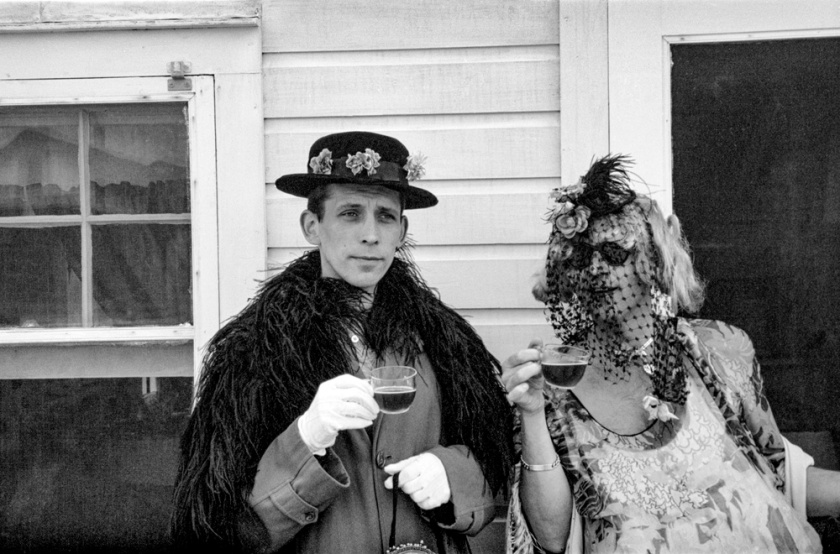
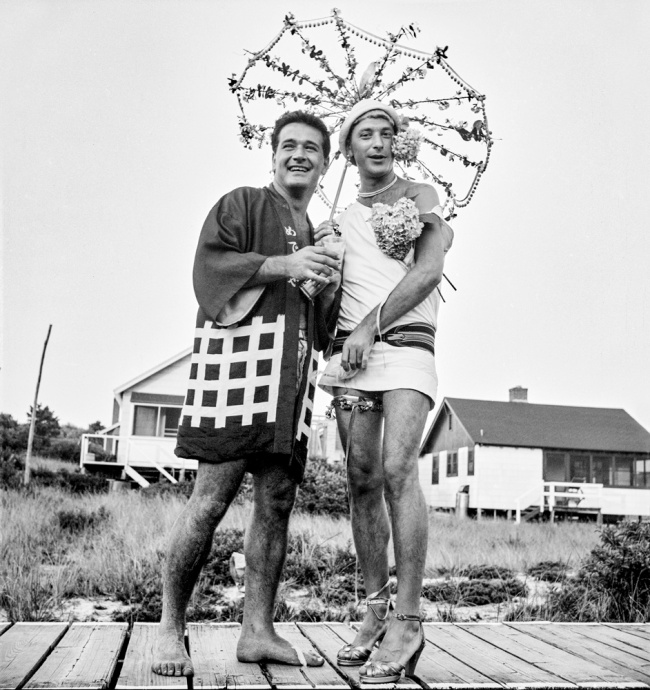
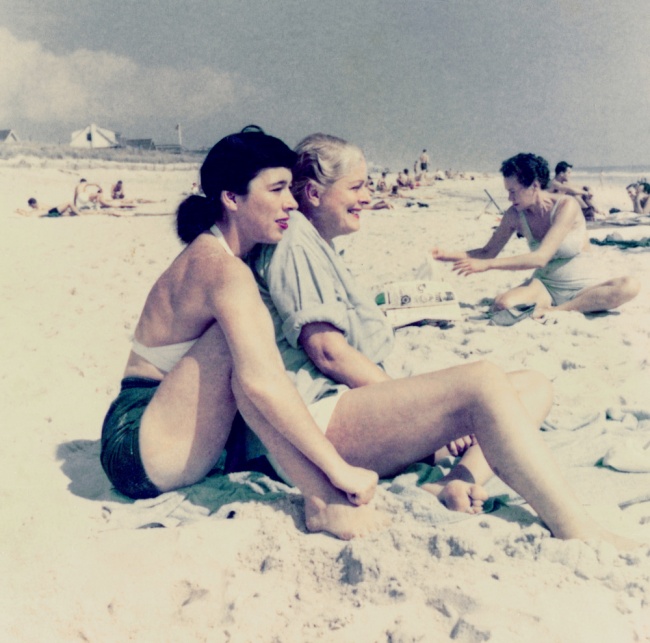
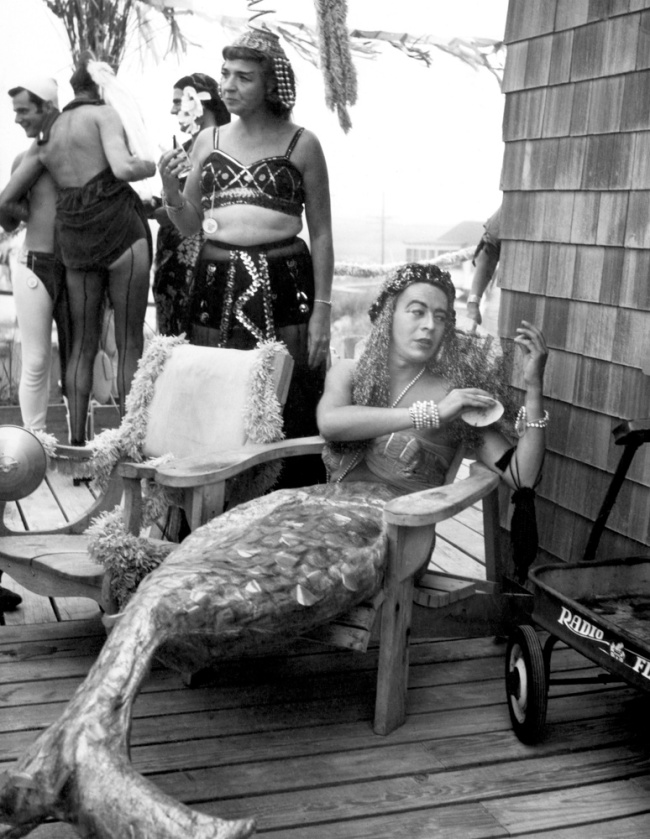

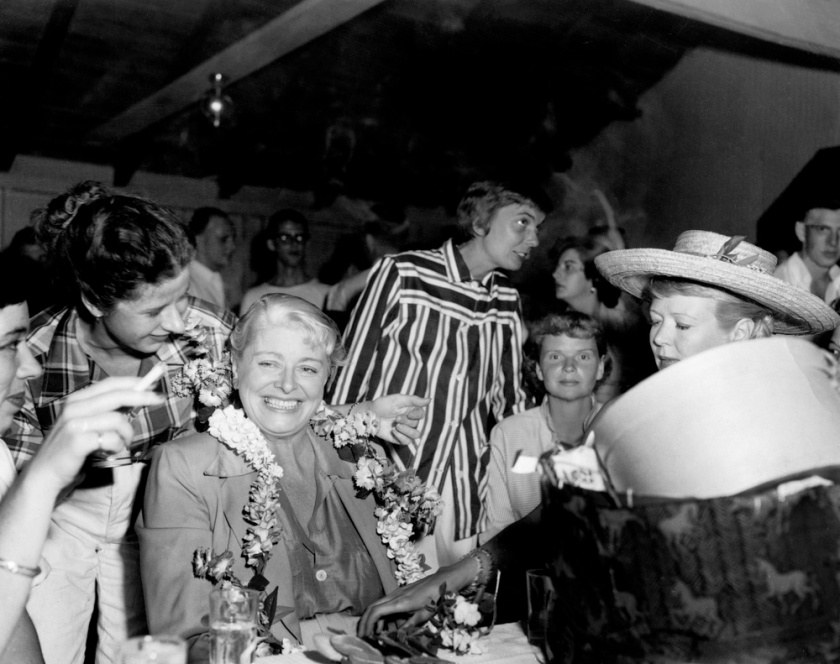

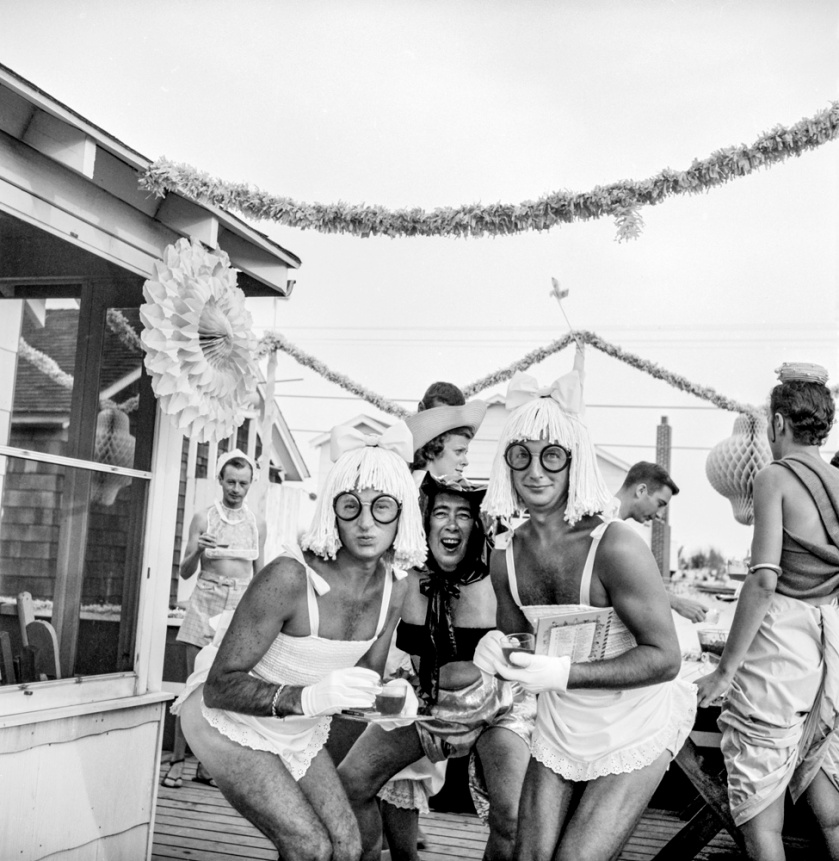
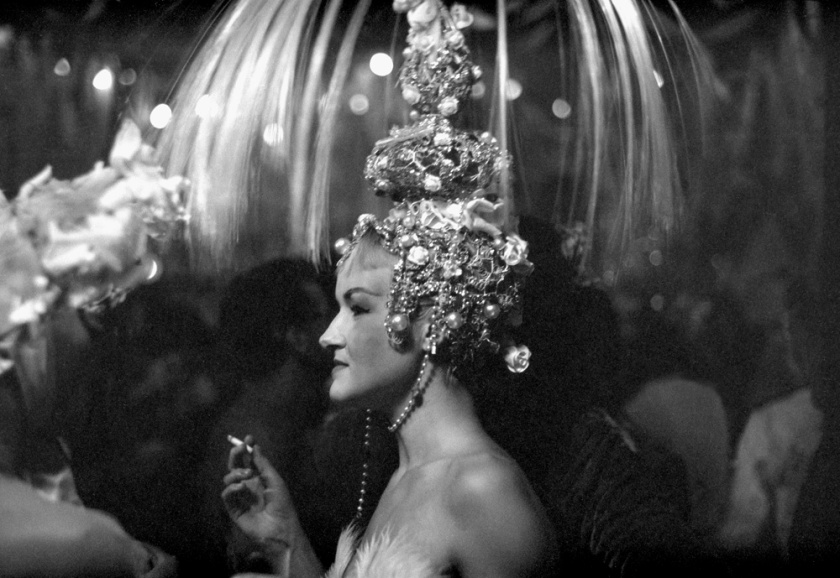
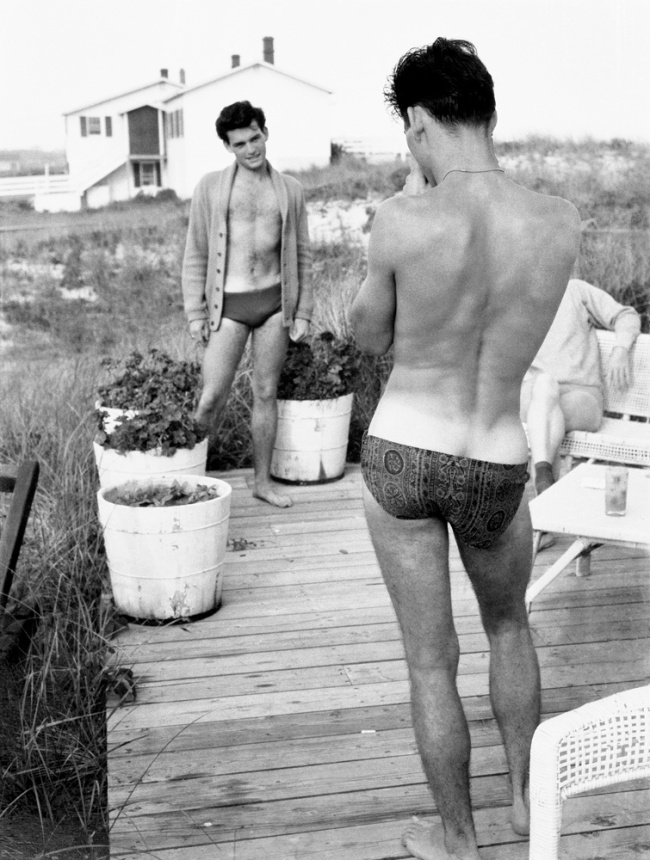
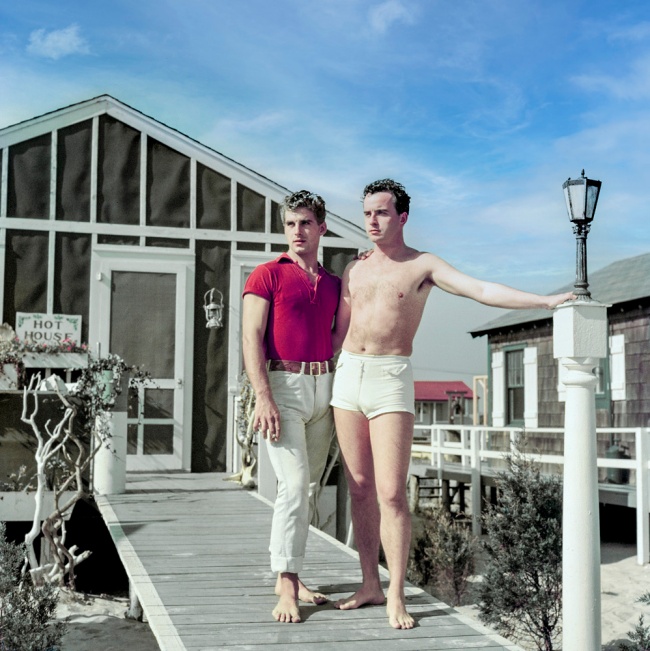
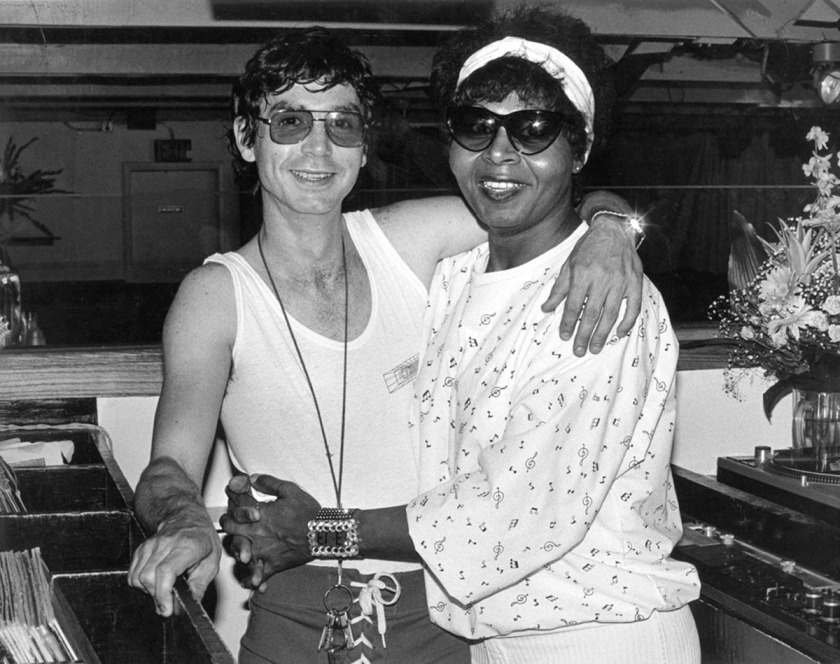














You must be logged in to post a comment.